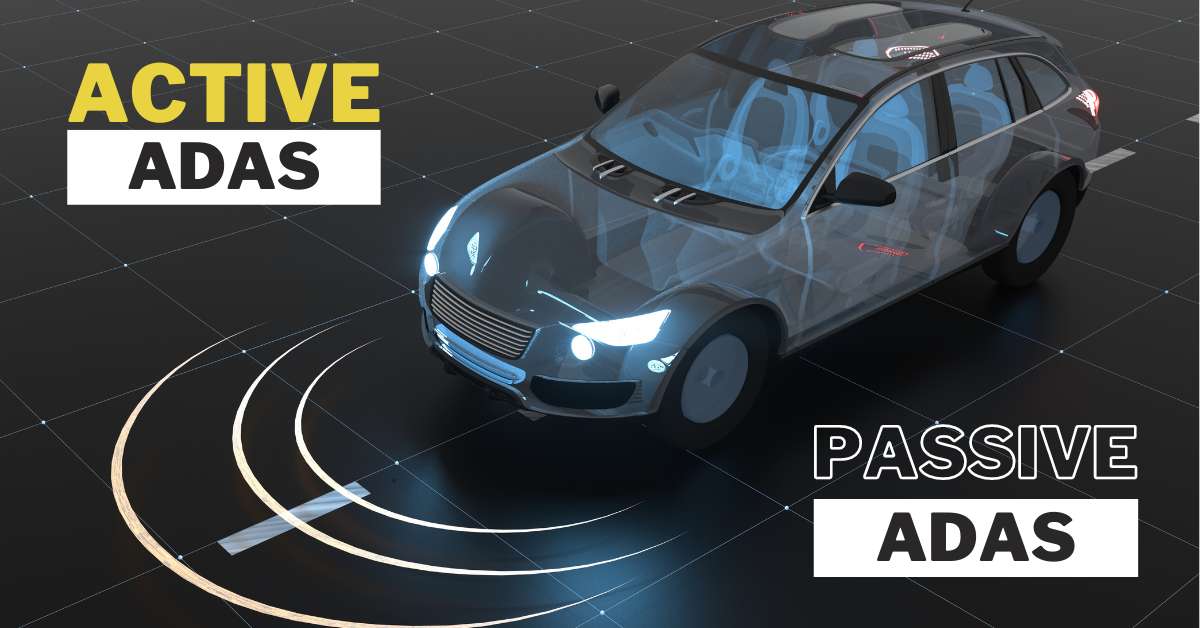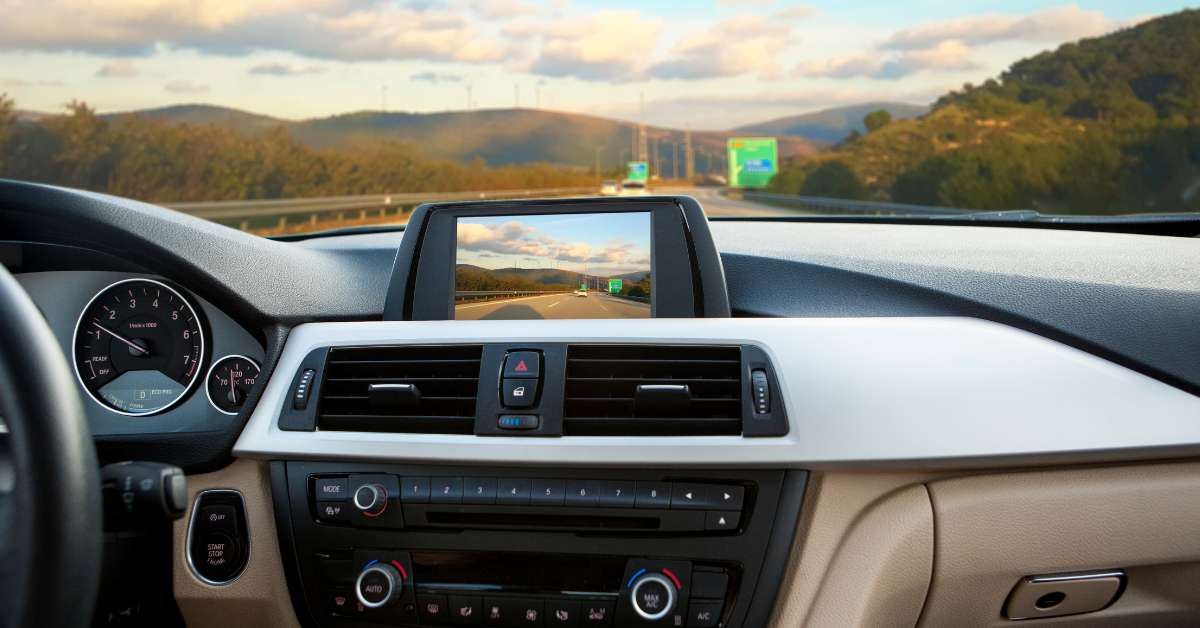Picture this: you’re cruising down the highway, enjoying the scenic views, and feeling the wind in your hair. Suddenly, a car swerves into your lane without warning.
In a split second, your car’s Advanced Driver Assistance Systems (ADAS) kick into action, alerting you to the danger and even taking corrective measures to avoid a potential collision.
But what exactly is ADAS in cars? How does this innovative technology work to enhance safety on the roads? Join us on a journey through the fascinating world of ADAS as we unravel its intricacies and explore how it is revolutionizing the way we drive.
Get ready to dive deep into the realm of automotive innovation and discover how ADAS is transforming our driving experience for the better.
What is ADAS in Cars?
ADAS, or Advanced Driver Assistance Systems is a set of technologies designed to enhance vehicle safety and improve the driving experience.
These systems utilize sensors, cameras, and other advanced technologies to provide drivers with assistance and information to reduce the risk of accidents and improve overall safety on the road.
There purpose is to provide an easier and safer driving experience to the user.
Types of ADAS in cars

Automatic driving assistant systems can be divided into two types the active and the passive systems.
Passive ADAS
These are systems that passively assist the driver in driving. Most of these provide information to the driver in various forms and perform auxiliary functions but at the end of the day, they can’t affect the movement of a vehicle.
Read More: What is Torque in Car: The Driving Force Behind Your Vehicle
For example, the blind spot monitoring system can only inform the driver about an obstruction being present but it cannot stop or steer the car away.
Active ADAS
As the name suggests in this system the assistance system can take steps to prevent the worst-case scenario and actually drive the car to a certain extent.
For example, if the Automatic emergency braking (AEB) system detects an impending accident then it can apply the brakes without the driver’s assistance.
Benefits of ADAS technology
- Stress Reduction and Improved Comfort
ADAS technology helps drivers feel more relaxed and comfortable by assisting with driving tasks. Features like adaptive cruise control keep a safe distance from other vehicles, so drivers don’t have to constantly adjust their speed. Lane-keeping assistance systems help drivers stay in their lane, making it easier to steer without worrying too much.
- Enhanced Driving Ease and Convenience
ADAS features make driving easier and more convenient. Automated parking systems guide the car into parking spots, saving time and reducing the chance of parking accidents.
- Reduced Fatigue and Tiredness
By doing some of the driving work, ADAS technology helps drivers stay alert and less tired. Adaptive cruise control adjusts the car’s speed based on traffic, so drivers don’t have to keep pressing the gas pedal all the time. This helps drivers feel more awake and focused on the road.
- Lower Risk of Accidents and Collisions
One big benefit of ADAS technology is it helps prevent accidents. Forward collision warning systems warn drivers about potential crashes ahead, giving them time to react. Automatic emergency braking systems can even apply the brakes if needed to stop a crash from happening.
Read More: American Car Brands in India: An Overview
- Decreased Maintenance Costs and Vehicle Wear
ADAS features can also save money on repairs and make the car last longer. By helping drivers avoid accidents, they reduce the need for costly repairs. Features like adaptive cruise control also help the car’s parts, like brakes and tires, last longer by promoting smoother driving.
In short, ADAS technology makes driving safer, more comfortable, and can even save money in the long run.
How ADAS Works in Real Time

ADAS technology works in real-time by using sensors, cameras, and computers to help drivers stay safe on the road. These systems constantly monitor the surroundings of the vehicle and provide instant feedback to the driver to prevent accidents and improve the driving experience.
- Sensors and Cameras:
ADAS systems rely on sensors and cameras installed around the vehicle to gather information about its surroundings. These sensors can detect other vehicles, pedestrians, road signs, and lane markings, among other things. Cameras capture visual data, while sensors measure distances and speeds, providing a comprehensive view of the road ahead.
- Data Processing:
Once the sensors and cameras collect information, the data is processed by onboard computers in real-time. These computers analyze the data to identify potential hazards and assess the vehicle’s position relative to other objects on the road. Advanced algorithms interpret the data to make split-second decisions and determine the appropriate response to ensure safety.
- Immediate Feedback:
Based on the analysis of the collected data, ADAS systems provide immediate feedback to the driver through visual, auditory, or haptic cues. For example, if the system detects a vehicle in the driver’s blind spot, it may illuminate a warning light on the side mirror or emit a sound alert to notify the driver. Similarly, if the vehicle drifts out of its lane without signaling, the system may gently steer the vehicle back into the lane or vibrate the steering wheel to alert the driver.
- Active Intervention:
In some situations, ADAS systems can take active control of the vehicle to prevent accidents. For instance, if the system detects an imminent collision with a vehicle ahead, it may automatically apply the brakes to reduce the severity of the impact or bring the vehicle to a complete stop.
Limitations of ADAS Systems

Despite their benefits, ADAS systems have some concerns and limitations that need to be addressed:
Over-reliance on Technology: There is a risk that drivers may become overly reliant on ADAS systems and become complacent, leading to decreased vigilance and slower reaction times in critical situations.
Read More: A Closer Look at 13 Luxury Car Brands in India
Limited Effectiveness in Certain Conditions: ADAS systems may not perform optimally in adverse weather conditions such as heavy rain, snow, or fog, or in situations with poor visibility or poorly marked roads.
False Alarms and Erroneous Intervention: ADAS systems may occasionally provide false alarms or intervene unnecessarily, leading to driver frustration and reduced trust in the technology.
Cybersecurity Risks: ADAS systems rely on interconnected electronic systems that could be vulnerable to hacking or malicious interference, raising concerns about cybersecurity and data privacy.
Cost and Accessibility: The cost of implementing ADAS technology can be prohibitive for some consumers, limiting its accessibility and adoption, particularly in lower-income communities.
Conclusion
ADAS technology has revolutionized automotive safety and driver assistance, providing real-time feedback and proactive intervention to enhance driver confidence and reduce the risk of accidents.
As advancements continue to unfold, including the integration of artificial intelligence and the expansion of communication systems, the future of ADAS holds tremendous potential for further improving road safety and transforming the driving experience for generations to come.

